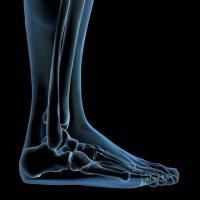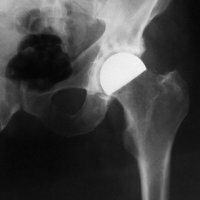Fluid in the knee: what to do?
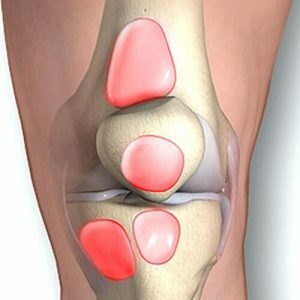
The knee is the largest joint in the human body.While walking on it affects the entire mass of the body, so damage in this area is often enough.As a rule, all diseases of the knee joint are the result of all kinds of injuries, falls and excessive load on the joint.One quite unpleasant, and in some cases dangerous, pathology of the knee joint is the accumulation of fluid in the knee.
The liquid in the knee can be transparent and cloudy, bloody and with a slight yellowish tinge.Even if the injury was insignificant, or the load was given on the knee is small, the development of the condition in question is possible.Treatment in this case should start immediately, and for this it is important to know the first symptoms of fluid in the knee.
Table of Contents:Symptoms and causes of fluid accumulation in the knee
The causes of the condition in question can be:
- hemoarthrosis - hemorrhage in the knee joint;
- fractures of the joint bones( eg, condyles of the hip and patella);
- meniscus damage;
- damage( stretching, tearing) of ligaments.
Often, fluid in the knee arises against the background of arthritis, infectious diseases, allergic reaction, hemophilia - these diseases can also act as reasons for the development of the condition in question.
Symptoms of fluid accumulation in the knee do not appear immediately, even if this condition was preceded by trauma.Any damage to the knee is accompanied by swelling and swelling, severe pain and hemorrhage in especially severe cases. But the main, the first symptom of the appearance of fluid in the knee is a significant increase in this area of the lower limb.
The second significant, always pronounced symptom is a dull-looking pain.It appears because of the deformation of the joint accumulated fluid.By the way, an increase in the knee joint and pain is always accompanied by stiffness of movement.In addition, the condition in question often occurs against a background of a slight increase in body temperature to subfebrile indicators.
Doctors distinguish the chronic form of synovitis - a condition that is characterized by a slow accumulation of fluid in the knee .This process is accompanied by non-intensive pain, patients often just tolerate it, or begin to engage in self-medication.The result of this careless attitude toward one's own health is, in most cases, deforming arthrosis.
Note: in medicine classifies reactive synovitis of the knee joint, which refers to allergic diseases and is caused by the mechanical / toxic effect of the provoking factor.Reactive synovitis acts as an allergic reaction of the body, is not subject to treatment and disappears on its own, as soon as the contact of the patient with the allergen is discontinued.
Treatment of fluid in the knee
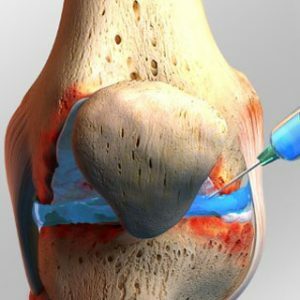 The only possible and most effective treatment is the removal of fluid from the knee joint. This procedure is performed in the operating room, anesthesia for this, as a rule, is not required.The doctor carefully inserts a thin needle into the cavity of the affected joint( special development) and drains all the liquid with a syringe.
The only possible and most effective treatment is the removal of fluid from the knee joint. This procedure is performed in the operating room, anesthesia for this, as a rule, is not required.The doctor carefully inserts a thin needle into the cavity of the affected joint( special development) and drains all the liquid with a syringe.
After the accumulated fluid has been removed, the doctor necessarily inserts antibiotics into the cavity, regardless of whether he has any suspicions of infection.Then, a knuckle bandage or knee is applied to the knee, thereby providing the operated joint with complete rest.The patient should be in the ward of the hospital and observe bed rest.
Further treatment is therapeutic and consists in the use of various anti-inflammatory drugs - most often doctors use Diclofenac and Voltaren.
Note: during the period of getting rid of fluid in the knee doctors will necessarily determine the cause of the development of the condition in question.If it is not identified, then soon a recurrence of the problem will occur and the operation for suctioning the liquid will have to be repeated again.
Traditional medicine
Fluid in the knee is not a modern disease, it was known to our ancestors.There are quite a few recipes that are based on various medicinal plants. Here are just a few of them:
- Ointment from grass comfrey.You need to take a glass of comfrey grass( pre-chop) and mix
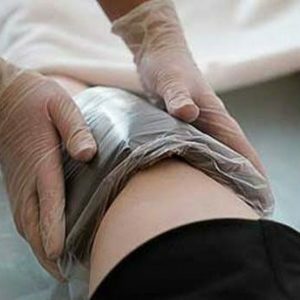 with 200 grams of lard.The resulting mass is put in the refrigerator for 5 days, and then rubbed into the diseased knee joint twice a day.Necessarily during treatment with an ointment from the grass of the comfrey, you need to apply an elastic bandage on the patient's knee joint.
with 200 grams of lard.The resulting mass is put in the refrigerator for 5 days, and then rubbed into the diseased knee joint twice a day.Necessarily during treatment with an ointment from the grass of the comfrey, you need to apply an elastic bandage on the patient's knee joint. - Rye broth.In a liter of water, you need to fill half a glass of rye grains and boil on low heat for 20 minutes.Next, the broth should be cooled, filtered and added to it 2 teaspoons of barberry, 200 ml of vodka( or diluted alcohol) and 500 grams of honey.All the ingredients are thoroughly mixed, and the drink is taken to a cool room for three weeks.Then it is taken 2 tablespoons three times a day before each main meal.
- Oil from bay leaf.Prepare 2 tablespoons of the crushed laurel leaf and pour them with a glass( 200 ml) of vegetable oil.The product should be infused for a week, and then they need to lubricate the damaged knee joint three times a day.
Note: in some cases, therapeutic methods, including those from the category "traditional medicine", help get rid of fluid in the knee, relieve inflammation and reduce pain.But!First, such treatment does not remove the underlying cause of the development of the condition in question.Secondly, there is only a symptomatic effect, does not prevent the development of infection.Thirdly, in the absence of timely performed qualified medical care, deforming arthrosis can develop, which can not be cured.
Fluid in the knee is a condition that does not pose a danger to human life.But to solve this problem urgently, because it not only brings a lot of discomfort, but also leads to complications.
Tsygankova Yana Aleksandrovna, medical reviewer, therapeutist of the highest qualification category


